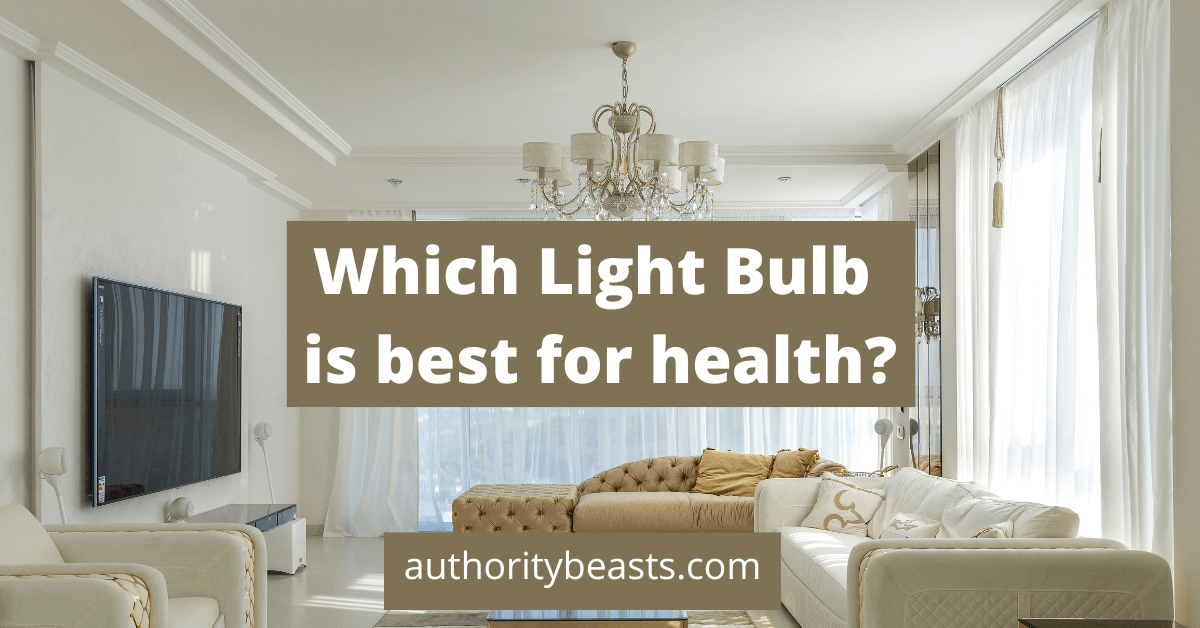There are many different types of light bulbs on the market these days, and it can be confusing to figure out which ones are best for your health. In this blog post, we will discuss some of the most common types of light bulbs and provide tips on how to choose the healthiest option for your home. We’ll also provide a list of our top five favorite healthy light bulbs. So, whether you’re looking to upgrade your current light bulbs or just want to learn more about the options available, read on!
Factors to consider when choosing light bulbs:
There are many factors to consider when choosing light bulbs for your home. We need to determine which light bulb is best for eyes or health etc. The type of bulb, the color temperature, the brightness, and even the shape can all impact your health in different ways. Here are a few things to keep in mind as you choose the best light bulbs for your home.
Type of Bulb
The type of light bulb you choose will have the biggest impact on your health. Incandescent bulbs, which are the traditional type of light bulb, emit a lot of infrared light. This type of light is beneficial for your skin and can actually help to reduce wrinkles. However, incandescent bulbs also emit a lot of blue light, which can have negative effects on your sleep cycle. If you’re looking for a healthy option, look for light bulbs that emit more red and yellow light, like LED bulbs.
Color Temperature
The color temperature of a light bulb is measured in Kelvin (K). A lower Kelvin rating means the light emitted will be more yellow, while a higher Kelvin rating means the light will be more blue. Blue light is beneficial during the day because it can help to improve your mood and increase your alertness. However, blue light exposure at night can disrupt your sleep cycle and lead to health problems like obesity and depression. For this reason, it’s important to choose light bulbs with a lower Kelvin rating for use in the evening and at night.
We recommend light bulbs with a color temperature of 2700K or lower.
Brightness
The brightness of a light bulb is measured in lumens (lm). A higher lumen rating means the light emitted will be brighter. While you might think that brighter is better, this isn’t always the case when it comes to your health. In fact, exposure to bright light can actually be harmful to your health. Studies have shown that exposure to bright light can increase your risk of developing macular degeneration, a condition that leads to vision loss. For this reason, it’s important to choose light bulbs with a lower lumen rating for use in your home.
Shape
The shape of a light bulb can also impact your health. For example, compact fluorescent light bulbs (CFLs) contain mercury, which is a toxic substance. If a CFL breaks in your home, it can release mercury into the air and pose a health risk to you and your family. LED bulbs don’t contain mercury, so they’re a safer option for your home.
FAQs:
1. Which light bulbs are best for health?
There is no one-size-fits-all answer to this question, as the best light bulbs for health will vary depending on your individual needs. However, we recommend choosing light bulbs with a lower Kelvin rating for use in the evening and at night, as they will emit less blue light and be less likely to disrupt your sleep cycle. Additionally, LED bulbs are a safe and healthy option for your home, as they don’t contain mercury like CFLs do.
2. What is the difference between incandescent and LED light bulbs?
Incandescent bulbs emit more infrared light than LED bulbs, which can be beneficial for your skin. However, they also emit more blue light, which can have negative effects on your sleep cycle. LED bulbs don’t contain mercury like CFLs do, making them a safer option for your home.
3. What is the difference between blue light and yellow light?
Blue light has shorter wavelengths than yellow light. Exposure to blue light can help improve your mood and increase your alertness. However, blue light exposure at night can disrupt your sleep cycle and lead to health problems like obesity and depression. For this reason, it’s important to choose light bulbs with a lower Kelvin rating for use in the evening and at night.
Conclusion:
Now that you know more about the different types of light bulbs and how they can impact your health, you’re ready to choose the best option for your home. Here are our top five favorite healthy light bulbs:
